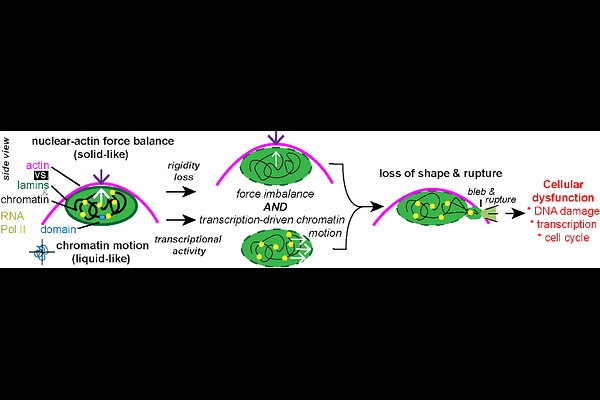Transcriptional activity generates chromatin motion that drives nuclear blebbing

Transcriptional activity generates chromatin motion that drives nuclear blebbing
Prince, K.; Lin, K.; Li, A.; Borowski, N.; Stephens, A. D.
AbstractAbnormal nuclear morphology is a hallmark of human diseases, including cancers and age-related disorders. Previously, maintenance of nuclear morphology and integrity was thought to be solely dependent on a force balance between nuclear mechanical resistance and actin antagonism. However, our recent work revealed that inhibiting RNA polymerase II suppresses nuclear blebbing independent of altering force balance, but the mechanism remains unknown. Through removing cell culture media serum and then adding it back, we can decrease and then restore transcriptional activity. Decreasing transcriptional activity decreases nuclear bleb formation, stability, and rupture while returning transcriptional activity restores nuclear blebbing. These modulations of transcriptional activity did not alter nuclear or actin mechanics. The mean square displacement (MSD) of chromatin domains labeled via transfected Cy3-dNTPs revealed that transcription activity regulates chromatin motion. To determine if increasing chromatin motion is a mechanism to increase nuclear blebbing, we used an established RAD51 inhibitor BO2. We verified BO2 increases chromatin domain motion which resulted in increased nuclear blebbing. We reveal the mechanism by which transcriptional activity drives nuclear blebbing is through chromatin motion. Thus, two hallmarks of human disease are directly linked via transcriptional activity and abnormal nuclear shape.